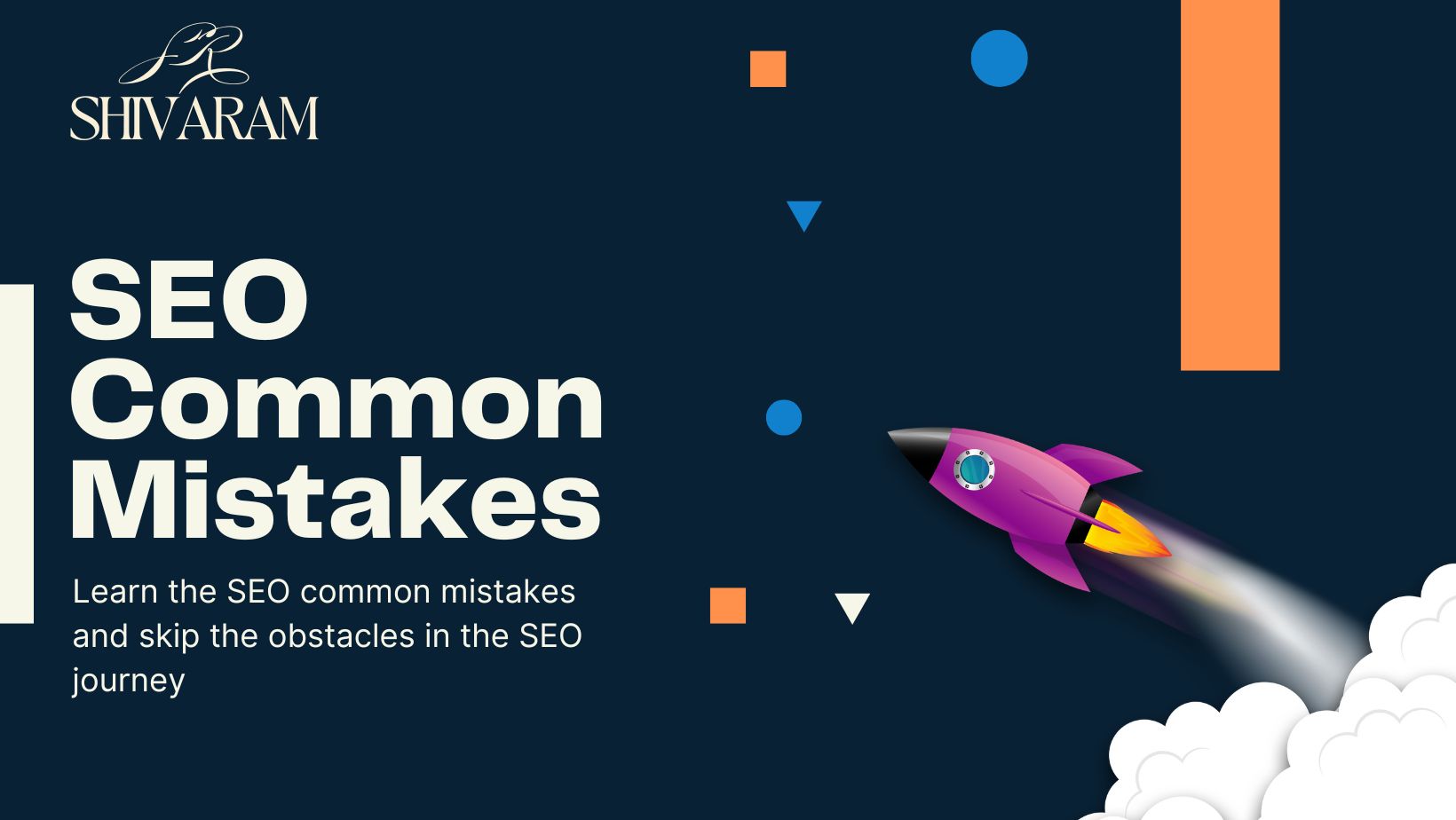Impact of Common SEO Mistakes on Website Ranking and Traffic
Think of your website as a small shop on a busy street in Kathmandu. If the sign is unreadable, the door is locked on some days, or people can’t find your phone number, customers walk past. Search engines behave similarly: poor metadata, slow-loading pages, and poor mobile experience reduce trust and visibility.
Today, Google evaluates real-world user experience (Core Web Vitals) and uses the mobile version of your pages for indexing, so what visitors actually experience on phones matters a lot.
Before you dive into fixing errors, it’s smart to learn the core types of SEO — so you can understand where these mistakes come from and how each area (on-page, technical, off-page, and local) affects your rankings.
Once you understand that foundation, check out these tools to fix common SEO mistakes that make auditing and improvements faster.
The Top 12 Most Common SEO Mistakes That Could Hold You Back in 2025 and How to Avoid Them
1. Ignoring Keyword Definition
Treating keywords like tags rather than understanding user intent.
Why it hurts
You might rank, but get the wrong visitors.
Fix list
- Assign intent (informational, navigational, transactional) to every page.
- Use local and Nepali-language variants (e.g., “dentist Kathmandu” ).
- Map content to the search funnel.
2. Keyword Stuffing
Repeating the exact phrase over and over.
Why it hurts
Readers bounce; Google penalises or ignores the tactic.
Fix list
- Use natural phrasing, synonyms, and related concepts.
- Aim for clarity over repetition. Read aloud if it sounds robotic, rewrite.
3. Poor Keyword Strategy
Betting only on broad terms or ignoring local long-tail queries.
Why it hurts
Hard to rank; misses buyers.
Fix list
- Combine head, long-tail, and local keywords.
- Prioritize pages that match high-intent queries (bookings, contacts, product pages).
4. Neglecting Title Tags & Meta Descriptions
Missing or weak copy in SERP snippets.
Why it hurts
Lower click-through-rate (CTR), less organic traffic.
Fix list
- Write unique titles under ~600 pixels.
- Make meta descriptions a one-line pitch + CTA. Keep them honest and relevant.
5. Poor Website Speed
Pages that take too long to show the main content or jump around while loading.
Why it hurts
Users bounce, and Google uses these signals as a result.
Fix list
- Run PageSpeed Insights and prioritize fixes that improve LCP and visual stability.
- Compress images, lazy-load, minimize JS, enable caching, and use CDN.
6. Not Optimizing for Mobile
Hidden content, poor layout, or slow mobile pages.
Why it hurts
Google uses the mobile version first. If the mobile is weak, rankings suffer.
Fix list
- Mirror important content on mobile.
- Test with mobile emulation and real devices.
7. Low-Quality Content
Short pages that fail to address user questions.
Why it hurts
Low engagement, weak topical authority.
Fix list
- Include practical, local examples (such as prices, opening hours, and seasonal advice).
- Answer related user questions (use an FAQ block).
8. No Redirection for Broken Links
Deleted pages that return 404s without 301 redirects.
Why it hurts
Lost link equity and poor user experience.
Fix list
- Crawl the site monthly, implement 301 redirects for moved content, and maintain a redirect spreadsheet.
9. Fully Relying on AI
Publishing AI drafts without editing.
Why it hurts
Generic content, factual errors, missed local signals.
Fix list
- Always human-edit: add local data, personal voice, and fact-check.
10. Not Updating Old Content
Letting once-great pages go stale.
Why it hurts
Rankings slip as competitors update.
Fix list
- Refresh headlines, stats, and examples every 3–6 months. Republish with date notes if substantial.
11. Unoptimized Images
Heavy files, missing alt text, or no dimensions.
Why it hurts
Slow pages, missed accessibility, and poor image search performance.
Fix list
- Resize, serve modern formats (WebP), lazy-load, and use descriptive alt text that includes local context when relevant.
12. Lack of Local SEO
No Google Business Profile, missing local schema, or ignoring Nepali-language queries.
Why it hurts
Lost customers who search for places by name (e.g., “hotel near Thamel”).
Fix list
- Optimize Google Business Profile, add local structured data, collect local reviews, and build citations on reputable Nepali sites. Local SEO delivers high ROI in Nepal.
Wrapping Up
Avoiding these SEO mistakes can dramatically improve your visibility, conversions, and user trust, especially in Nepal’s growing online space. Whether you’re a freelancer, small business owner, or creator, consistent optimisation brings long-term results.
If you’re starting out, check out this beginner’s guide to SEO from scratch to build a solid foundation and start ranking the right way.
Frequently Asked Questions
Q: Which mistake costs the most for Nepali businesses?
Often, mobile speed + local SEO. Mobile devices dominate, and local intent drives conversions (bookings, calls).
Q: How do I check Core Web Vitals?
Use PageSpeed Insights and Google Search Console’s Core Web Vitals report. Fix high-impact issues first (LCP, CLS).
Q: Should I care about Nepali language SEO?
Yes, many searches combine English and Nepali or utilize the Nepali script to target both variants where relevant.
Q: Quick wins for a Kathmandu business?
Claim Google Business Profile, ensure the NAP (name/address/phone) is consistent, add local content, and improve mobile speed.


